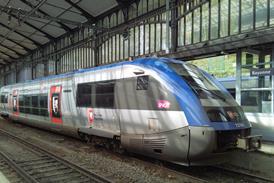THE OPENING of the Lötschberg base tunnel (p328) and the Betuwe Route will add two more entries to the steadily-growing list of routes equipped with the European Train Control System. This month is also due to see the start of Level 1 operation in Luxembourg. But as EU Co-ordinator Karel Vinck admits (RG 5.07 p275), we are still a very long way from a continent-wide interoperable signalling system.
But despite earlier reports, we cannot yet add LGV Est Europ?en to our list. Although the route is being dual-fitted throughout, all trains will operate using TVM430 when services start on June 10. According to SNCF insiders, compatibility testing between the two signalling systems has yet to be completed. Assuming that system certification is achieved in September as anticipated, the ETCS-fitted TGV POS sets will then run for a year with on board equipment operating in shadow mode for monitoring purposes. Only in 2009 will the ETCS be approved for live operations assuming that all the testing proves satisfactory.
Nevertheless, progress is still being made. The first trip in Scandinavia using ETCS Level 2 took place in April, when Bombardier's X1 test unit successfully ran between Nyland and Gimonäs on a 20 km section of the Botniabanan. Bombardier is providing its Interflo 450 technology for this line, which is due to open in 2010, and the 120 km/h trial was intended to verify GSM-R communications along the test section.
Perhaps reflecting Dutch experience on the Betuwe Route and HSL Zuid, the new President of the Institution of Railway Signal Engineers Wim Coenraad made some harsh comments about the cost and complexity of ETCS in his recent presidential address. After 17 years of development, and despite R&D spending conservatively estimated at €500m since 1995, 'I am afraid neither ERTMS nor GSM-R score any points on the "revolutionary" scales', he said.
'The fact that we need a new layer of European bureaucracy, just to manage the specification and system versions, cannot be a good thing for our industry', he warned, adding that 'it has taken until Version 2.3.0 to become usable and interoperable (more or less). Could it be that in our railways, research organisations, user groups and supply industry, we have too many chefs meddling with the soup? Aren't we over-engineering ERTMS into the next Eurofighter?'




































